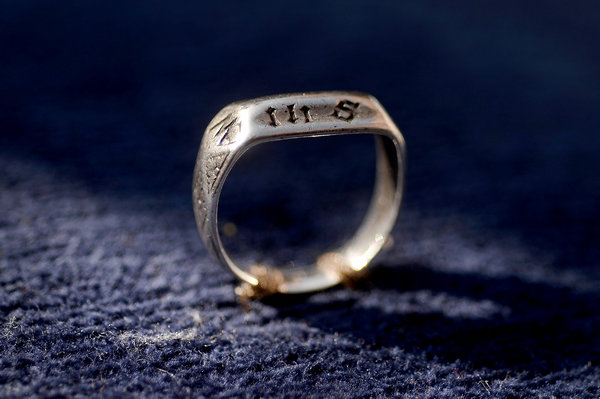 |
|
A 15th century ring believed to have been owned by the French heroine Joan of Arc is shown at a theme park in France.[Photo/ Agencies] |
A ring thought to belong to France's most famous historical martyr, Joan of Arc, was unveiled on Sunday at a theme park, even as historians remained skeptical about its authenticity.
The Puy du Fou historical theme park in the western Vendee region paid $425,000 for the ring, which is thought to have been in Britain for almost six centuries, at a controversial auction in February in London.
Some 5,000 spectators showed up for the unveiling on Sunday, with the ring carried on a cushion in a wooden ark, with its own honor guard and a military procession.
"It's a little bit of France that has returned. The ring has come back to France and will stay here," said Philippe de Villiers, founder of Puy de Fou, before a rendition of French anthem La Marseillaise.
The gold-plated silver ring was dated to the 15th century by an Oxford laboratory, but the trove of historical documents that came with it have yet to prove it belonged to the French martyr.
"They are only at the start of the exploration. It's a lot of work but a beautiful adventure," says expert Vanessa Soupault, who saw the ring recently.
The bulky piece of jewelry features three engraved crosses and an inscription that signifies "Jesus-Maria".
That fits a description recorded at Joan of Arc's trial in 1431, where she told the court the ring had been given by her parents.
Puy du Fou says the ring was probably enlarged and modified at some point in the last 200 years.
Joan of Arc, who fought against the English occupation of France during the Hundred Years War, was burned alive at the stake but became a symbol of French resistance and was later made a saint by the Catholic Church.
The difficulty of tracing the ring's path through the centuries has left many historians skeptical.
It was thought to have been confiscated by her Burgundian captors shortly before they handed her over to the English, and may have ended up in the hands of the archbishop of Winchester, Henry Beaufort, who was present at her trial. It stayed in Britain ever since.
|
|
|
|
|
|
|
|
